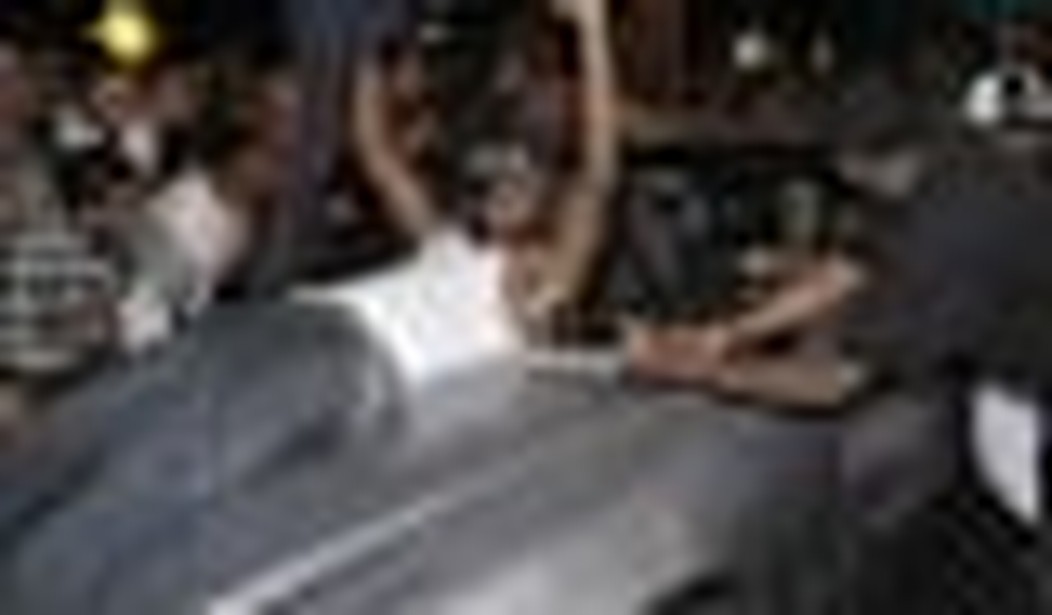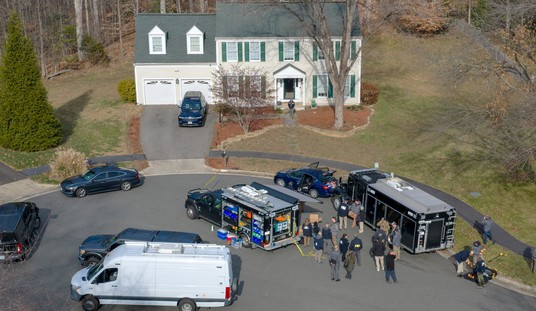I don’t know when this peculiar custom began, but it is one I hope — in vain, surely — to see ended someday.
I refer to the bizarre practice of some sporting fans who, on the occasion of their favored team having achieved some triumph on the court, field, or ice rink, choose to celebrate the event by running amok in the streets, looting businesses, breaking windows, tipping over automobiles, and setting fire to garbage cans, cars, and, occasionally, the unfortunate passerby.
Perhaps you were watching on television as the most recent manifestation of this odd ritual took shape on the streets outside the Staples Center in downtown Los Angeles Thursday evening, just after the Lakers defeated the Boston Celtics for the NBA championship. It was my misfortune to have a far more intimate experience of the proceedings than was offered on television.
As the game neared its end and a Laker victory seemed imminent, you might have assumed that the Los Angeles Police Department, having weathered this exact scenario only a year ago, would have been fully prepared to quell any destructively boisterous behavior and avoid a repeat of last year’s embarrassment. And for a brief while at the game’s conclusion such an assumption might have appeared correct. Though most of the crowd inside the Staples Center remained in their seats for some time after the game so as to witness the presentation of the championship trophy, the clientele of the nearby restaurants and taverns, having fortified themselves for their post-game exertions, soon spilled out onto the streets. For many of these people, the Laker victory was merely the second reason for celebration that day: they had already been inspired to new heights of exuberance by Mexico’s win over France in the day’s World Cup soccer action. Indeed, Mexican flags were much in evidence among the revelers.
But what these celebrants encountered once out in the fresh air, no doubt to their great disappointment, was phalanx upon phalanx of helmeted LAPD officers stretching in every direction. There are few sights more demoralizing to the aspiring rioter than that of a few hundred cops ready and eager to have a good whack at you at your first toss of a brick.
And so it was that for those first few minutes after the game the atmosphere on the streets was one of jubilation, not destruction. But what those aspiring rioters soon discovered, as they ventured out from the immediate area of the Staples Center, was that those phalanxes of police officers that had at first glance seemed to stretch for miles, in truth extended only for a block or two, or perhaps three depending on which route they took. And beyond that suffocatingly secure perimeter: blissful freedom, with abundant supplies of large windows just begging to be shattered and a wide assortment of other property at their disposal to be stolen, broken, marked with graffiti, or set ablaze to suit their whims.
So that’s what happened. The police radio frequencies soon were filled with reports of looting here and burning there and general mayhem everywhere. LAPD Chief Charlie Beck was there at the Staples Center along with many of his top command staff, and they all looked rather stricken when it became apparent that their master plan, months in the making and forged by the department’s failure at the same event last year, was found wanting.
In addition to the 500 or so police officers already on hand near the arena, there were hundreds more standing by at command posts a few miles away, many no doubt hoping for a Boston comeback as the game neared its end. But by the time the decision was made to call in these reinforcements, about ten minutes after the final buzzer, the rampage was already well under way. Why all those extra officers hadn’t been posted in crucial spots well prior to the end of the game is a deep mystery, one that I’m keen to hear explained.
What’s more, once those reinforcements were finally summoned into downtown, they had to compete for space on the roads with those basketball fans who, having seen the disturbances getting started, were trying their best to leave. One unlucky man, driving a Lamborghini or some such exotic sports car, watched through the windshield in helpless horror as a few of the revelers selected his expensive machine, with its low profile and rakish lines, as the ideal impromptu dance floor. Imagine the conversation with the insurance man that must have taken place on Friday.
You might have thought that with the chief of police and all those command officers present that the operation would have been run more smoothly. If that was indeed your expectation you are not a police officer, certainly not one with the LAPD. Police officers everywhere know, and LAPD officers might know best of all, that the degree of success in any tactical operation is in inverse proportion to the number of command officers present. Seldom has this proven more true than in downtown Los Angeles Thursday evening. I even saw, while running to one trouble spot with my colleagues, an assistant chief who was also running, but in the opposite direction. (It was just as well; he only would have been in the way.)
Even with the arrival of the additional officers, the situation remained chaotic for more than an hour and a half. Commanders gave orders that were sometimes nonsensical, conflicting, or both. “Mobile field forces” of fifty or more officers were dispatched to violent outbreaks that could have been suppressed with ten or even fewer. In one instance, two entire mobile field forces were sent to an intersection at the report of a riotous group. And there followed the amusing but embarrassing spectacle of more than one hundred officers speeding to that intersection, alighting from their cars, and forming a skirmish line across a six-lane street, all for the purpose of chasing away a crowd that had dispersed at the appearance of the first police car. Incredibly, the lieutenant in charge of the group still went ahead with the prescribed measures he had long ago read in some training bulletin: he had those hundred cops line up abreast and march up the street to clear away people who had fled five minutes earlier.
It was readily apparent to those of us manning the skirmish lines that the situation called for breaking down the mobile field forces into smaller, more nimble squads that could fan out across downtown and roam at will to confront those small groups of drunken hooligans who were making life miserable not only for downtown residents and merchants but also for the many decent fans who were merely trying to escape in one piece. But by the time that order came, near midnight, the troubles had largely petered out on their own.
When things got out of hand after last year’s championship, the mayor and the LAPD brass surveyed the damage and said it could have been worse. They’re saying the same thing this year. It’s true, as far as it goes, but it’s hardly a goal to aspire to.
I hope the Lakers lose every game next year.










Join the conversation as a VIP Member